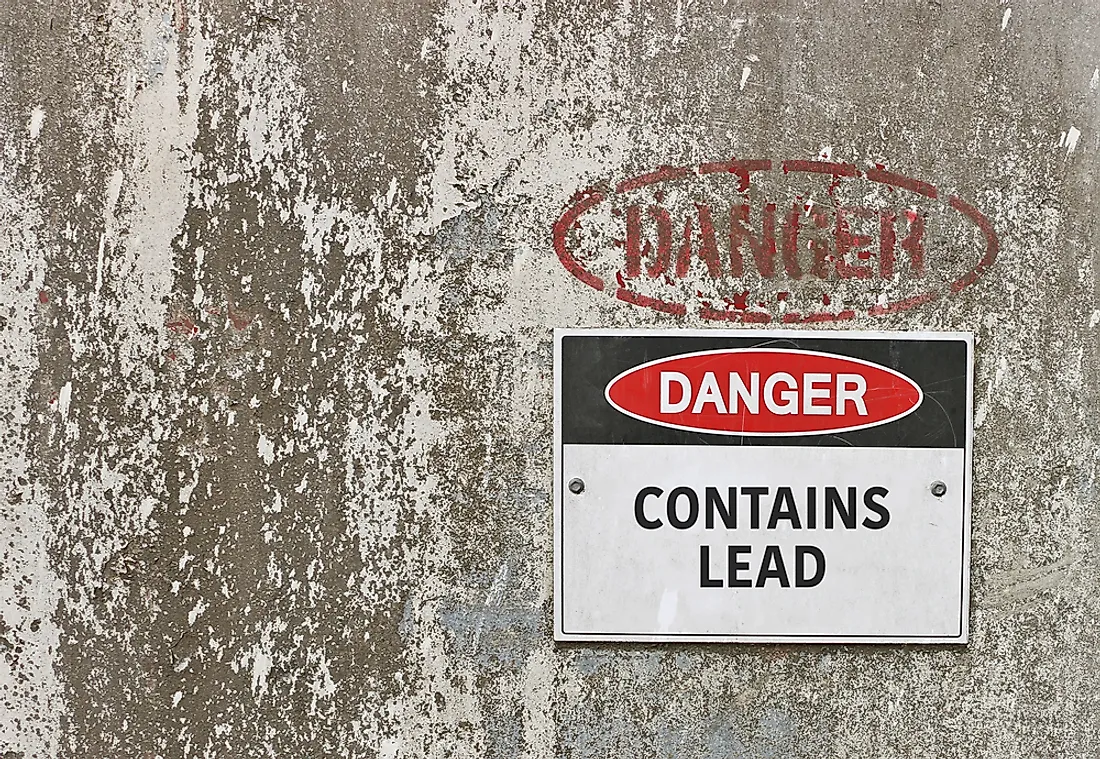What Are The Sources Of Exposure To Lead In The Environment?

Lead has a property of being denser than many common materials. Exposure to toxic levels of this heavy metal can be harmful to human health. Recognition of lead’s toxicity came in the late 19th century, leading to phasing out of the metal in many applications. Severe lead poisoning may cause anemia, coma, and even death. Lead poisoning caused about 853,000 deaths in 2013, with the developing world being most at risk. Industrial use of the heavy metal has led to consideration of lead as a widespread environmental pollutant.
Occupational Exposure
The primary cause of lead poisoning in adults is occupational exposure. This includes people working in industries producing lead products, such as ammunition and some surgical equipment. Other occupations vulnerable to exposure include lead smelters and miners, fitters and plumbers, glass manufacturers, auto mechanics, battery manufacturers, construction workers, recyclers, and plastic manufacturers among others. Individuals who deal with lead products are also at risk of exposure. Parents who are exposed to lead in the work place can poison their children with lead dust carried on their clothes or skin. Occupational exposure to lead may result to an increase in the risk of cardiovascular diseases.
Soil
Lead exposure in urban areas may result from residual lead found in soil. The occurrence of the metal in soil mostly is caused by residues from used engine oil, pesticides, lead paint that has broken down, tire weights, contaminated landfills, or nearby industries among others. The use of the contaminated soil in food production may lead to exposure to the heavy metal.
Water
Surface water and groundwater may contain lead, which comes from soil and the atmosphere. Exposure to lead poisoning also occurs in drinking water. Acidic water can dissolve the lead found in the plumbing and fixtures of public water supply. Up to 20% of the total exposures to lead in the US is traced back to drinking water.
Paint
Children can get exposed to lead through lead-based paint. Poor conditions of such paint often contaminate homes, through chips and lead dust, as it deteriorates. Crawling children may ingest the dust, and also eat lead paint chips from walls. A simple way to avoid such incidents is to add a new coat of paint over the lead-based paint.
Ammunition
Contact with bullets serves as a source of exposure to lead. Production of ammunition consumed more than 84,800 metric tons of lead in 2013 ranking it second after manufacture of batteries. Game hunters use lead bullets to gun down animals. There is a possibility of ingesting lead from the consumption of game meat since hunters may include lead fragments during cleaning and preparation of the meat.
Prevention Of Lead Poisoning
Prevention of lead poisoning results mostly from avoidance of exposure to lead. Some steps taken to reduce the level of lead in children’s blood include ensuring that they wash their hands frequently. Children should be encouraged to take more iron and calcium. Replacement of lead pipes will ensure there is no lead exposure through drinking water. In the US, some laws limit lead amount in the paint, such as the 1978 law which reduced lead to equal or less than 0.06% on furniture and toys. An essential prevention method is screening, which tests the blood of people and children living near lead industries.











